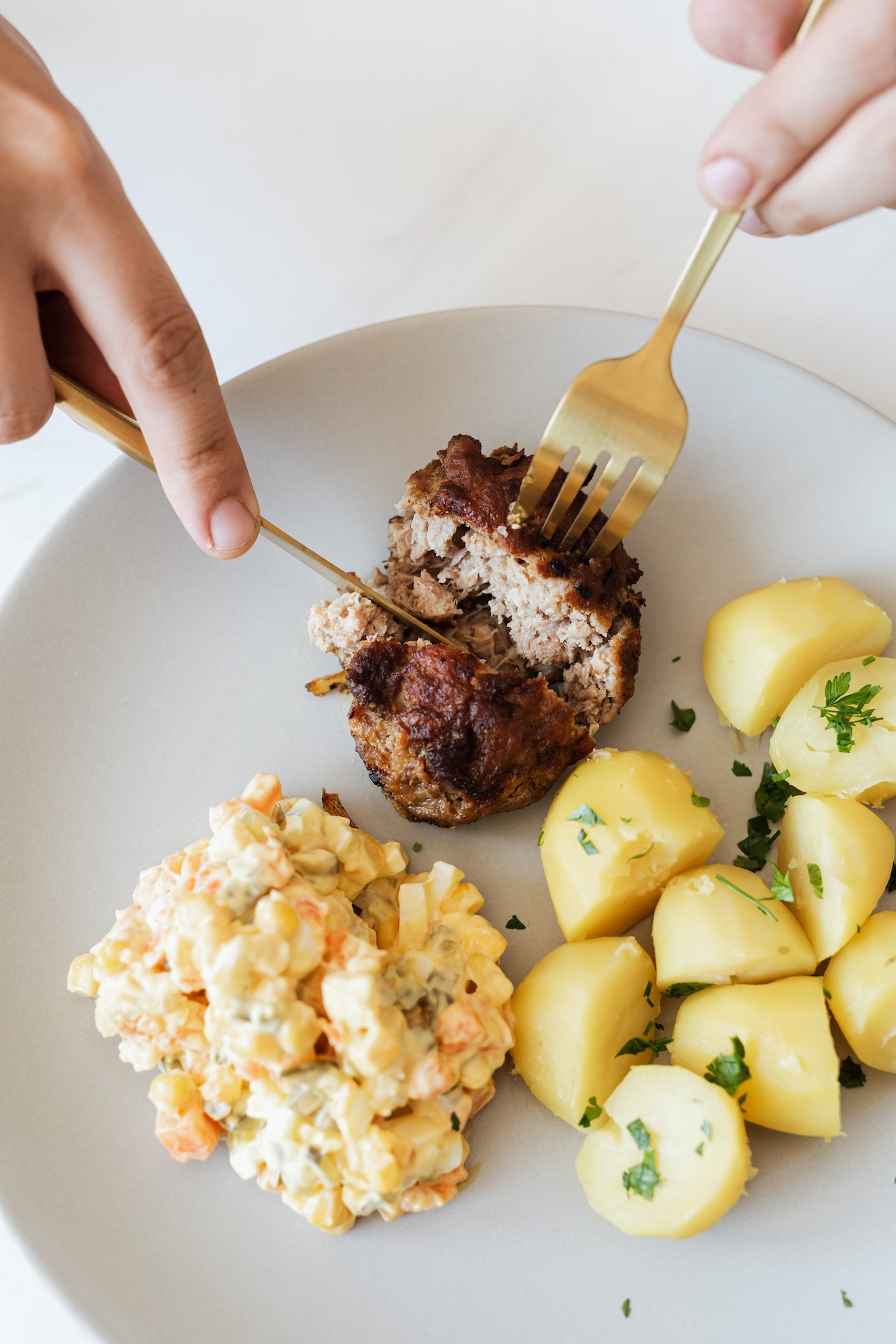Pommes Aligot is more than just mashed potatoes with cheese added to them. This absolutely amazing concoction of potatoes and cheese originated in the Midi-Pyrénées area of France and is a celebration of local cheese that is eaten on special occasions with sausage or roasted meat. It is generally made with Tomme de Laguiole or Tomme d’Auvergne cheese, but outside of their tiny locations in the south of France, it can be challenging to locate these fresh soft cheeses famed for their melting properties. Both the pairing and the origin make sense because potatoes and cheese go well together. Mountainous areas are ideal for growing potatoes and are also the origin of several excellent melting kinds of cheese, like Gruyère, Emmental, and Fontina.
Making the dish
The preparation process begins with cooking the potatoes. Most aligot recipes call for a waxier variety, such as Yukon Golds. Compared to fluffy russets, they produce a purée that is creamier and thicker, which pairs well with the melted cheese’s texture. To ensure that the potatoes are well-seasoned all the way through, I prefer to cook them in water that has been strongly salted. In order to improve the flavor of the potatoes, I also prefer to add aromatics to the pot, such as garlic cloves and thyme sprigs. The thyme sprigs must be thrown away, but the crushed garlic can be added for an extra taste. Next, I mash the potatoes in a big saucepan with lots of butter, either using a ricer ( you can also use a food mill for an extra-smooth purée).
The potatoes are thoroughly mixed when I add the cream after that. It’s time to melt in the cheese once your arm is worn out and the potatoes are tightly packed. Due to the Swiss’ exceptional reliability and the Gruyère’s rich flavor, I used a combination of both kinds of cheese. To melt the cheese and continue to create an elastic texture, simply add it in small amounts while stirring continuously over low heat.
Your potatoes will be silky and smooth, with scarcely any graininess, by the time the remainder of the cheese has melted in, and they should pull from your spoon in endless strands. Like lava that has been run into cool air, the entire thing should be just loose enough to flow slowly. If it’s too stiff, add a little cream and whip it in until it’s completely emulsified.
Ingredients
● 675g Yukon Gold potatoes, peeled and cut into small chunks
● two medium-sized cloves of garlic, one whole and one minced, divided
● two stems of thyme
● Salt
● one stick of unsalted butter (115g), cut into tablespoon-size pieces
● 1 cup heavy cream (235ml), plus more if needed
● 300g mixed Alpine cheeses, such as Swiss, Gruyère, Comté, and/or Fontina, grated
Directions
1. In a large saucepan, cover the potatoes and one garlic clove with at least 2 inches of cold water. Add the thyme. Water should be salted to the degree where it tastes like tears. Water should be brought to a boil over high heat, then reduced to a simmer for about 20 minutes or until a knife easily and without resistance pierces the potatoes. Drain the potatoes in a colander. Remove the thyme.
2. Return the puréed potatoes to the pan, adding butter cubes as you go, using a ricer or food mill equipped with the finest disc. (If using a food mill, add the butter to the chunks of potatoes and run them through the mill; if using a ricer, add the butter to the saucepan with the riced potatoes.) Mix in the final garlic clove. Over medium-low heat, place the saucepan. Butter and garlic should be well mixed into the potatoes using a silicone spatula. (Alternatively, a wooden spoon may be used, but it won’t adapt to the sides of the pot like silicone will.)
3. Add the cream and stir vigorously until the cream is thoroughly mixed in. Continue working potatoes with a whisk and reduce heat to low if they start to sizzle and steam. This should take about 3 minutes.
4. Add grated cheese in tiny quantities, stirring after each addition, until completely melted and mixed. Continue stirring potatoes for 3 minutes more, or until they are thick, silky, smooth, and elastic (don’t worry about overworking the potatoes in this recipe because you want to build that starch). When you pull the aligot from the pot, it should develop long, stretchy strands.
5. Season with salt and pepper. The aligot should be thick, with a slow-flowing viscosity, like cooling lava; if it is too thick, work in little amounts of extra cream until it is loose enough.
6. Transfer to a warmed serving dish and served immediately. Aligot is generally served with sausages and meats, although it can also be eaten with roasted vegetables or on a bed of polenta. Aligot can be refrigerated in a sealed container. To reheat, place in a saucepan with a small bit of cream. Bring cream to a simmer before stirring it in, then continue to cook, adding additional cream as needed, until the aligot is heated through and the consistency is correct.
